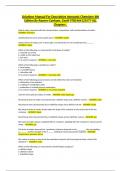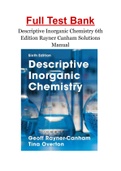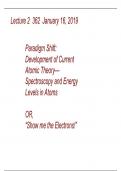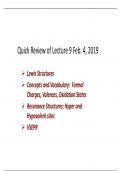Descriptive ino - Study guides, Class notes & Summaries
Looking for the best study guides, study notes and summaries about Descriptive ino? On this page you'll find 43 study documents about Descriptive ino.
Page 2 out of 43 results
Sort by
Descriptive Inorganic Chemistry 6th Edition By Rayner-Canham, Geoff 9781464125577 ALL Chapters .
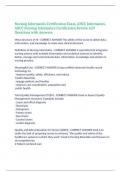 Popular
Popular
-
Nursing Informatics Certification Exam, ANCC Informatics, ANCC Nursing Informatics Certification Review 629 Questions with Answers,100% CORRECT
- Exam (elaborations) • 110 pages • 2024
-
- $15.99
- 1x sold
- + learn more
Nursing Informatics Certification Exam, ANCC Informatics, ANCC Nursing Informatics Certification Review 629 Questions with Answers Meta structure of NI - CORRECT ANSWER The ability of the nurse to utilize data, information, and knowledge to make wise clinical decisions. Definition of Nursing Informatics - CORRECT ANSWER A speciality that integrates nursing science with multiple information and analytical sciences to identify, define, manage and communicate data, information, knowledge and ...
Descriptive Inorganic Chemistry 6th Edition Rayner Canham Solutions Manual.
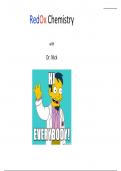
-
Descriptive Inorganic Chemistry 22-Redox Chemistry, Texas A&MU 2019
- Summary • 39 pages • 2023
-
- $2.60
- + learn more
The defining characteristic of a RedOx reaction is that electron(s) have completely moved from one atom / molecule to another. The molecule receiving the electrons has been Reduced The molecule giving the electrons has been Oxidized
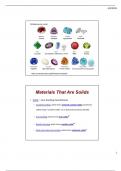
-
Descriptive Inorganic Chemistry 18-Materials That Are Solids, Texas A&MU 2019
- Summary • 43 pages • 2023
-
- $2.60
- + learn more
Solids : Four bonding classifications – Covalent bonding, which forms network covalent solids (sometimes called simply "covalent solids” as in diamond and silicon dioxide) – Ionic bonding, which forms ionic solids * – Metallic bonding, which forms metallic solids* – Weak intermolecular bonding, which forms molecular solids*
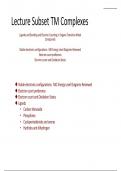
-
Descriptive Inorganic Chemistry 25-Ligans and Bonding and Electron Counting, Texas A&MU 2019
- Summary • 41 pages • 2023
-
- $2.60
- + learn more
Ligands and Bonding and Electron Counting in Organo-Transition Metal Compounds Stable electronic configurations: MO Energy Level Diagrams Reviewed Electron count preference Electron count and Oxidation States
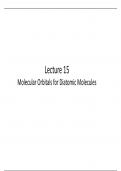
-
Descriptive Inorganic Chemistry 15-Molecular Orbitals for Diatomic Molecules, Texas A&MU 2019
- Summary • 25 pages • 2023
-
- $2.60
- + learn more
Solution will involve molecular orbitals - similar to atomic orbitals - but centred around all of the nuclei in molecule. Each defined by sets of quantum numbers,
Paradigm Shift: Development of Current Atomic Theory— Spectroscopy and Energy Levels in Atoms
Lewis Structures Concepts and Vocabulary: Formal Charges, Valences, Oxidation States Resonance Structures; Hyper and Hypovalent sites VSEPR
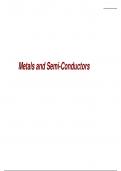
-
Descriptive Inorganic Chemistry 19-Metals and Semi-conductors, Texas A&MU 2019
- Summary • 26 pages • 2023
-
- $2.60
- + learn more
What are the characteristics of the metals that might be correlated with their crystal structures? What is metallic Bonding? Can MO theory describe it? Account for properties?

How did he do that? By selling his study resources on Stuvia. Try it yourself! Discover all about earning on Stuvia

